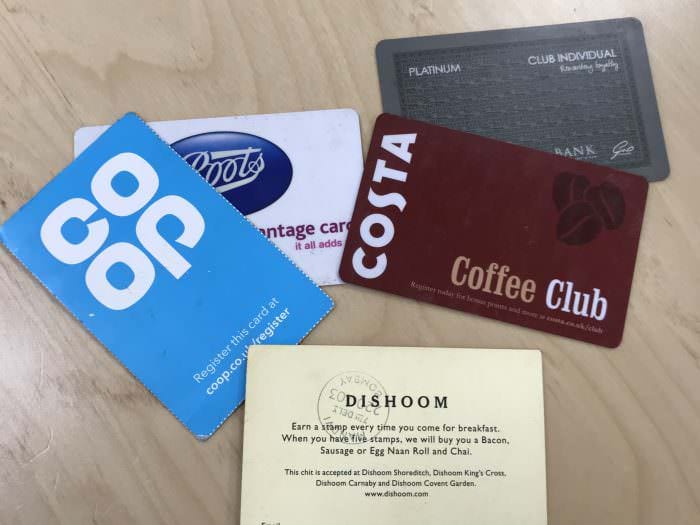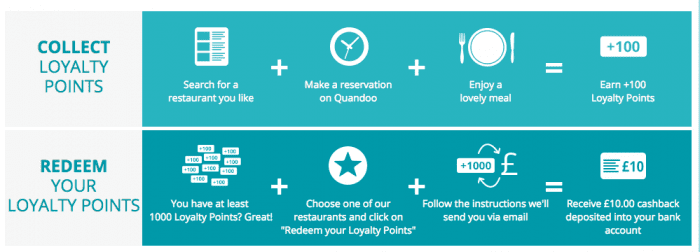First my wallet, now my phone, are stacked with customer loyalty cards, emails, and apps. But what do customers want in loyalty schemes?
The customer loyalty market is in a state of flux. While physical cards decline amidst low-contact social distancing, notifications and emails from my favourite brands are more targeted (and appealing!) than ever.
With marketing budgets tightening, customer engagement is a wise area to defend. Recent studies show it can cost up to 5x more to acquire a new customer than to retain an existing one.
Need a plan to create a winning marketing strategy?
Get started today using a tried and tested step-by-step process to optimize your marketing.
Start Now
Loyalty schemes are expensive to implement, promote and very costly to manage, both online and offline. But are they making a difference? Do they increase customer engagement, and what can we learn from the best examples?

Core Module

Customer onboarding and growth
Part of the Social media marketing Toolkit
Learn how to improve how you use digital communications to welcome new customers and encourage ongoing usage, and purchase, of these services
Learn MoreManaging customer loyalty schemes
Whether it's an in-house managed scheme or being part of an external one, loyalty schemes require technology, resource, capital and purely people to manage everything.
Firstly, if cards are involved, there is the cost of temporary and permanent cards, as well as replacement cards too. Thousands of cards, leaflets, letters, you name it. This is not cheap. If you're using an app, developing and managing an app is pricey but notably cheaper than printing and posting thousands of cards in the long-run. And considerably more pandemic-proof, as we have learnt.
CRM is crucial in this process too. Working with this level of granular data is a huge job, sometimes supported by third-party loyalty management companies or digital agencies, but this also requires in-house support. The customer insights gained through this activity, however, absolutely priceless.
Customer service for any loyalty scheme is also required. For example. Nectar receives hundreds of support queries daily on Twitter alone. Customer service requires resource, with potentially very damaging backlash otherwise.
Core Module

Customer service and success
Part of the Social media marketing Toolkit
Learn how to review the quality of customer service delivered by online channels and balance this against the cost to serve
Learn MoreCustomer loyalty communications
Customer communication in your loyalty scheme is crucial. There is no point having a loyalty scheme if not many people have joined. From TV ads, to print ads, radio ads, microsites, display ads online and ads across stores - multichannel campaigns are needed at launch and ongoing.
Schemes should always aim to both retain members, reduce churn and to keep them grow in the most cost-effective way possible. Digital marketing enables programmatic, targeted comms through email, social media and web and app digital experience.
Core Module

Improve digital customer experience
Part of the Digital marketing strategy and planning Toolkit
Learn how to review and improve the effectiveness of your digital experiences, focusing on how website experience quality can be improved to encourage customer engagement and loyalty
Learn MoreHow do customers feel about customer loyalty schemes?
Research by Forrester found that customer engagement was higher amongst US consumers who were members of loyalty programmes. Their data suggests that the programs do influence where customers shop and those who are members of loyalty programs are more likely to rate customer experience as more positive.
Even smaller businesses are using schemes too, such as Individual Restaurants, a fairly small restaurant chain. They have a loyalty card which they use to increase visits through point offers when people join and for their birthday, January sales and so on.
Quandoo, an online restaurant booking service, also offers points for every booking and they expire if customers don't keep booking tables in restaurants.

What's happening in the sector?
Tesco Clubcard is one of the most successful loyalty schemes. Created by Dunnhumby, they use data from grocery purchases to provide FMCG companies with insights. No doubt the card also increases sales, loyalty, and use of other Tesco services, such as Teco card cards (Tesco bank) too.
Sainsbury's allow customers to use the third-party Nectar card to collect and spend points in Sainsbury's stores. In 2018, in a shock but frankly sensible move, they acquired the whole Nectar scheme and company from Aimia, a Canadian company which previously owned Nectar.
This was a strong but bold move from Sainsbury's, they now not only have their own loyalty scheme but a scheme in which other stores use (such as Argos, which Sainsbury's now also own), BP and eBay.
This gives Sainsbury's the same or possibly even stronger position as Tesco and Dunnhumby have. They also have the FMCG insight data, which is actively sold by Nectar and therefore will contribute to sales within the Nectar service, as well as the fees they charge partner clients and the savings from running their own loyalty scheme, instead of paying a third-party to manage everything.
In 2020, Morrisons launched its "More" loyalty card in 2015. Customers earn points on every purchase, at 5,000 points customers get a £5 voucher. Morrisons More for our NHS is currently offering NHS staff an additional 10% off their shopping.
Core Module

Create a digital SWOT using RACE
Part of the Digital marketing strategy and planning Toolkit
Learn how to layout and populate an omnichannel SWOT-TOWS analysis as part of situation analysis
Learn MoreThings to consider if you're thinking of launching a loyalty scheme
If you're considering starting or joining a loyalty program for your business the first thing to do is a lot of research - test different promotions, loyalty program ideas with customers and be specific about how they would look. It's best to test all of the specifics of potential programs in both a quantitative (surveys) and qualitative (focus groups and interviews) way.
The second stage would be to soft launch with some customers first by testing the new loyalty program with a pre-vetted, small group of customers who are engaged and interested in taking part. Remember, it might take them a while to see rewards as a result of their purchase so at this stage you just want to make sure everything (technologically) works, before scaling it up.
Finally, don't forget, this is a customer-centric strategy! Make time to check in and see how it's going over time by conducting customer research with customer loyalty program members and strive for improvements.
Core Module

Define audience personas
Part of the Content marketing Toolkit
Learn how to develop a customer persona that can help you to target your marketing more effectively
Learn More












